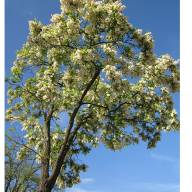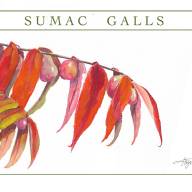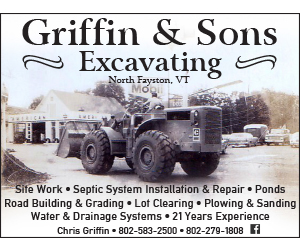From November 15-30, Vermont Fish and Wildlife will be collecting deer teeth from hunters to evaluate deer population management decisions. Nick Fortin, state deer project leader, inspecting a harvested deer.
Photo courtesy of Nick Fortin.
The Vermont Fish and Wildlife Department has made their annual call of assistance to local hunters. They’re asking for teeth from deer harvested during regular rifle season, November 15-30.
For the past 10 years, hunters have been asked to pull an incisor tooth when they check in deer to the nearest reporting station. During the two weeks, a small, yellow, craft-paper envelope is available for hunters to put the teeth in, with an area to add information to match the tooth to the deer.
By analyzing the teeth, the department’s biologists can determine a deer’s age and get an overall understanding of how to manage the state’s deer population.
Nick Fortin, state deer project leader for the Fish and Wildlife department, said some key measures, like body weight or, in bucks, antler size, can help assess how healthy the deer are.
“That information is almost useless unless we know how old that animal is,” he said.
With the teeth, biologists will evaluate regional differences in ages and can estimate population size, growth rate, health, and mortality rate. Scientists determine age by looking at rings that formed on the deer’s teeth throughout their life.
“It’s exactly like counting rings on a tree stump,” Fortin said. “So, it gives us an accurate age of all those deer. And that for us is just critical management information.”
Vermont Fish and Wildlife set annual regulations for hunters, like how many deer they are allowed to kill a year, to manage the Vermont deer population.
“When we’re looking at (deer) health information, that’s an indicator of, do we have too many deer or not?” Fortin said.
In the past five years, Fortin said, they have typically ended up with teeth from 3,000 deer, some of which were shot by young hunters during Fish and Wildlife’s Youth Deer Weekend. Biologists would go to the check-in stations and pull teeth from every deer they saw.
Roughly 1,500 teeth come from biologists, he said. The rest are from voluntary hunters who have shown interest in getting the ages, which, once published in the spring, they can access with their Conservation ID.
“A lot of hunters are really interested in that, so we give them that piece so they can see the result as well,” Fortin said.
Although Fish and Wildlife receives about 1,000 less teeth per season than when they started the program – due to the pandemic and a tighter budget – they still feel that the amount they get now is good enough.
However, there are some parts of the state where they barely get any teeth, including southern Vermont where there just aren’t a lot of deer, Fortin said.
Fortin said the department hopes hunters will care enough to submit teeth, so their deer team can make the best possible management decisions.
“That is in their interest,” he said, “because that’s going to ensure the best possible hunting long into the future.”
The West Enosburg Country Store is one of the many deer reporting stations in the state. The store has been a reporting station for almost 13 years and played a role in the tooth collection process for almost the entire time the program has been around.
“It’s good to be involved,” said Timothy Hayes, manager of the store. He said if he’s around, he can help the hunter pull the tooth or explain how to do it.
“It’s kind of educational too for the hunters, which makes it good,” he said.
Hayes said, when Fish and Wildlife biologists come to the store to pull teeth, they also act as an educational resource – on teeth and deer health – for not only hunters, but also for kids who are learning how to hunt.
“The kids really like it because they get to hear something about the deer they shot,” he said. “It’s really good for the kids.”
Specialist state game warden Travis Buttle has been in the game since 1996 and has been in the Bennington district since 1998. Game wardens primarily focus on enforcing state hunting, fishing, and trapping laws.
Buttle came to Vermont after receiving a biology degree from the University of Montana and brings to the table a deep understanding of biological sampling, collecting an organism’s fluid or tissue to monitor or research.
“It was neat for me because of my longevity, to see a much more accurate way of measuring the actual age of the deer,” he said.
During the first 12 years of his career, Buttle said, the department would estimate the age of the deer by looking at the tooth-wear pattern on a jawbone. The problem with this, he said, was that as environments changed, or if the animal’s diet changed, so would the wear pattern.
“So, there is not much accuracy to that,” he said.
Buttle said this research is important for game wardens so they know the deer population in their district, allowing them to educate residents on population health and management decisions.
“It helps us explain to our hunters and non-hunters alike,” he said. “We have to have good scientific-based research and data to support the things we’re doing.”
Via Community News Service, a University of Vermont journalism internship.
You might also like













